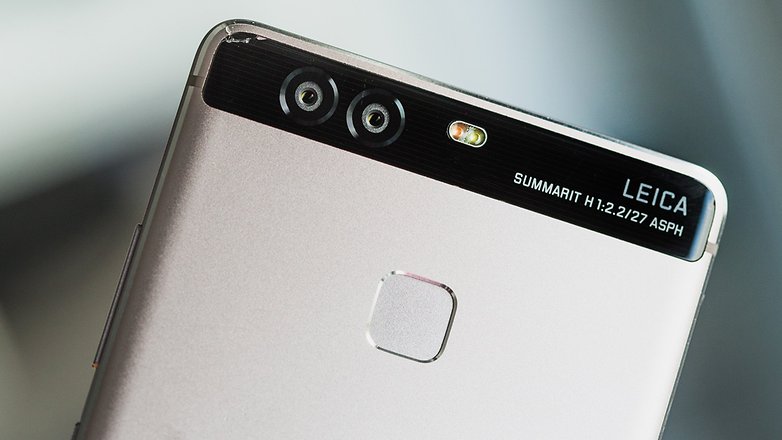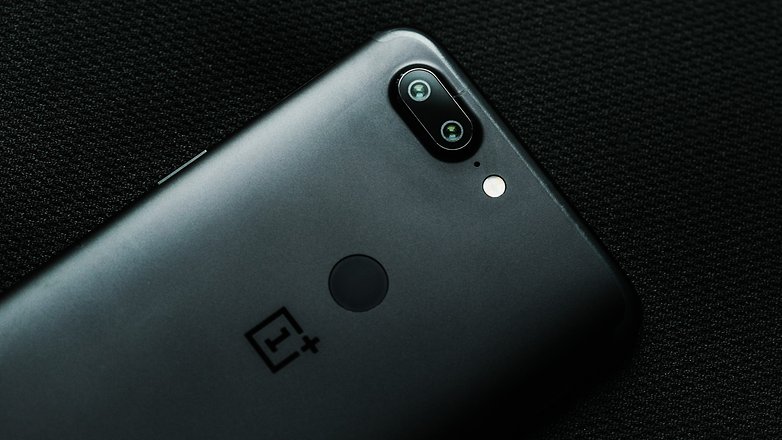Like many other things that have become fashionable just now, the dual camera in smartphones has come well before you can imagine. In 2011 HTC launched EVO 3D, with two cameras that did exactly what its name says, 3D. Just later, in 2014, HTC brought the One m8, another dual camera model.
LG was the first to bring this feature to Brazil with the LG Optimus 3D in 2011 (and later on with the LG G5 SE), and Apple only brought something in this style with the iPhone 7 Plus in 2016. .
Depth sensor camera
one of the simplest sensors and therefore appear quite as supporting, almost always at fewer megapixels. As its name implies, the sensor is directed to highlight the depth of the photo. Yes, we are talking about the famous portrait mode, or bokeh.
In this set, one of the sensors makes the three-dimensional reading in the scene, determining what is ahead and what is behind. The second sensor confirms the information and together can form images with a blurred background. This is an effect that good DSLR camera lenses naturally do, thanks to the lens set that makes it up.
On the smartphone, this simulated set, and although we have two cameras for it, they do not capture the three-dimensional objects accurately, so we often see photos in this mode with ears, hair and glasses with blurred parts. This blurry effect is also not super accurate, as it blurs the background of the image equally, which DSLR lenses do not.

Moto Z2 Force has one of the monochrome sensors / AndroidPIT
Monochrome sensor camera
This sensor is a feature that a very popular company in Brazil has used a lot. Both Moto Z2 Force and Moto G5S Plus thus have a common color sensor and a monochrome. This sensor is often identical to color, with the same specifications of even aperture and megapixels.
The big difference is that the RGB filter is missing from this sensor, which causes it to lose any color information, but also has one less layer of filter, allowing more light to enter. Thus, this sensor ends up having two uses: better black and white photos (the so-called true black and white, since you don't need to have a color photo and digitally color out) and higher quality photos with more light input.

Huawei P9, the one with the Leica lenses / AndroidPIT
It is also possible to use this sensor to offer portrait mode, as the two Motorola handsets do, but it ends up having more advantages in addition. One of the best examples of applying this sensor to the Huawei P9, supported by Leica lenses.
Wide angle (or super wide angle) camera
When you look at a smartphone and the cameras look very different from each other, it is very likely that one of them is a wide angle. With this kind of camera you get the most different photos, the ones that take a lot more image than an ordinary camera.
The first dual camera in Brazil, present in LG G5 SE, a wide angle (or super wide angle, as they also call). While one has a 16 megapixel sensor, 29mm and f / 1.8 aperture, the second quite different, featuring an 8 megapixel sensor, 12mm and f / 2.4 aperture. This second camera, although it looks smaller, gives it a much wider angle with its 12 millimeters.

LG G6 has improved the quality of super wide angle / AndroidPIT
Generally, cameras like this allow you to take both normal and open-angle shots by pushing a button or zooming the interface. The camera of the G5 was one of the first and had a lot of distortion, but the latest ones already do a beautiful job, including the LG G7.
Some of the best examples we have in Brazil are the Galaxy S9 and Zenfone 5Z, with wide angle sets (with telephoto, as I will explain below), and so we realize the pattern of a main, top and bottom camera, often with fixed focus, which makes photos at wide angle. Outside, the best example of Huawei Mate 20 Pro. It is possible to make very interesting photos with this set.

Mate 20 Pro Triple Set / AndroidPIT
Telephoto camera
These are the telephones we find on the most famous line ends. IPhones starting at 7 Plus, the Galaxy Note 8, the Galaxy S9 + and the Galaxy S10 have this set, which acts in the opposite way to a wide angle, bringing better zoom captures.
But not only in zoom that the telephoto lens has advantages, which is why this set is the most versatile and most adopted by the best handsets. Firstly, it obviously improves the zoom quality, which usually goes 2x. A 2x optical zoom is much better than a digital one, and even though above that the camera works with digital, it will do so on top of the 2x optics, improving overall quality.

Galaxy Note 8 has one of the best dual camera sets / AndroidPIT
Secondly, this is the set that enhances portrait mode. The telephoto camera coupled with the main camera which in this case acts as a deep one, usually wide can bring much more satisfactory background blur results (of course, as we see from the Pixel, it is quite possible to do the same thing with just one camera, but anyway) .
In some cases, such as Samsung Galaxy Note 8, OnePlus 5T, Zenfone 3 Zoom, Xiaomi Mi A1 and others, the set ends up being a mix of two sets, having a telephoto camera and a wide angle, bringing much more possibilities for capture. But the wide angle is not as strong as in those cases where there is only one common camera and another wide angle.

OnePlus brought the dual camera in 5T / AndroidPIT
ToF camera
The latest in cameras coming to add features to ToF devices, the abbreviation for Time of flight, or flight time. I mean, it's only new because they should become popular now by 2019, but for some time now Lenovo Phab 2 Pro and Zenfone AR, part of Google's Tango Project, had already brought this set. Currently, the Galaxy S10 5G and perhaps the LG G8, have this camera, for example.
Its main use is for photography, but for two less common uses: 3D face recognition and RV and RA. With the former, it allows more precise unlocking of handsets using this feature, making it as secure as Apple's FaceID. The second also enhances the use of these two technologies.

The Galaxy S10 5G has ToF camera front and back / AndroidPIT
In this module, there is an infrared laser that emits pulses of light. Thus, using the light reflected by the environment, it is possible to measure the distance of each and every pixel. The signal amplitude is also captured to the point where we have the exact measurement of each of the pixel distance.
That is, it does not capture images for photos themselves, and another sensor that reads the environment using the laser and the measurement that makes its return. ToF not only captures one image, but is able to evaluate each video frame and combine the artificial 3D images on the 3D model of the environment.
Hybrid sets are popular
Probably in this hybrid set that manufacturers will invest to improve the functions and quality of the camera. What we know is that, increasingly, double, triple, quadruple and even higher sets are already taking the devices, either top of the line or intermediate.
Right now, R&D labs from many manufacturers already have handsets for the next two or three years, but neither you nor I know if they contain a multiple set or not. You can only tell that the Nokia 9 PureView comes with five rear cameras, and hopefully that will stop it.
Do you use a multiple camera device? What resources do you use?
. (tagsToTranslate) Dual Camera (t) Dual Camera iPhone X (t) Dual Camera Samsung (t) Dual Camera Types (t) Dual Camera (t) What is Dual Camera (t) Dual Camera Smartphone (t) Wide Angle lens (t) super wide angle (t) telephoto (t) telephoto (t) m
